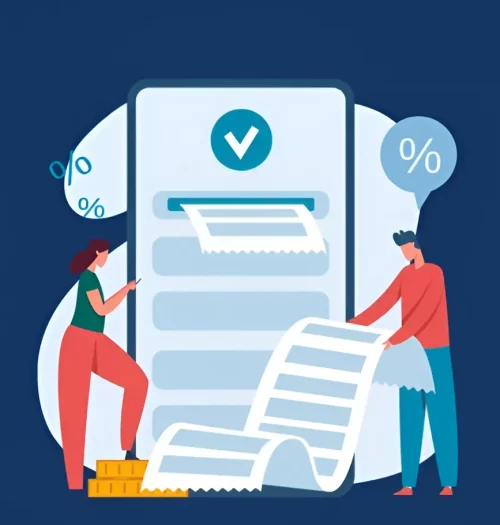


The SME sector plays a significant role in our society. It contributes majorly to the growth of India’s economy. According to Economic Times, the Ministry of MSME reported that India has about 63 crores of MSMEs, which adds to the country’s economic development. Even with such a high number, a staggering 85% of the sector is underserved in terms of credit. The factors behind this issue are underwriting, access and cost.
Traditional Lending faces many challenges in this segment, which resulted in a credit deficit of Rs. 16 lakh in India. The only way to overcome such a problem is the digitization of lending in the SME sector. Digital Lending is the way to bridge the wide gap that exists in the financial industry, especially in terms of lending to SMEs.
We recently had a speaker for our June 2022 webinar who imparted us with immense knowledge on the rise of Digital SME Lending. He is none other than the CEO of RapiMoney, Sharad Agarwal. This article summarizes the webinar. Read on to learn more!
Role of SMEs in the Indian Economy
The SME sector is the driving force contributing to India’s GDP growth, exports and employment. They are the prime agenda for the government to see development in the Indian economy. They comprise manufacturing, services, packaging, IT, food processing, infrastructure and many other industries. It has seen tremendous growth in recent years. And it is also providing employment opportunities in many rural areas.
However, the SME sector is heterogeneous and creates a high risk for many financial institutions. Due to the fact that the majority of businesses are family-run, their promoters prefer receiving financial support from unorganized sources even at extremely unfavourable terms. Banks’ capacity to judge the credibility of such units is constrained by inadequate credit history. Banks face obstacles due to poor recordkeeping and financial planning. The possibility of obtaining formal finance and developing a stronger track record for future needs are further limited by fear of low ratings and reluctance to dilute equity holdings.
You may also like: Impact of Budget 2021 on Banks & NBFCs
Covid-19 Impact on SME Sector
Because of its size, the scale of business, and accessibility to financial resources, the MSMEs sector has been one of the most susceptible sectors during the pandemic.
According to various studies and surveys, the national lockdown that was enforced in April 2020 had a negative impact on about 95% of enterprises, and 70% of those businesses continued to experience disruptions through August 2020.
Even after progressive unlocking, statistics indicate that up to 40% of firms had service interruptions through the end of February 2021. Market access, overall productivity, and gaining access to more finances are the three main obstacles MSMEs must overcome.
Lockdown in 2021 caused a drop in business volume of Indian MSMEs of an average of 11% as opposed to a 46% drop during the nationwide lockdown in 2020.
Government of India Initiatives to promote SMEs
To enhance the proportion of MSMEs in government procurement, the Government of India launched its e-marketplace. It is basically a digitally engaged market ecosystem that can lower costs, increase productivity, promote product development, and increase worker safety. Collaboration with research institutions, tech start-ups, and established overseas firms may prove to be a successful business strategy for MSMEs looking to establish a base of low-cost manufacturing and enter the Indian market.
The Indian government’s initiatives to assist SMEs, such as
- the Emergency Credit Line Guarantee Scheme,
- low repo rates, e-market integration,
- and PF and EPF support for both employers and employees
These schemes have begun to yield fruitful outcomes.
Loan Products Benefitting the SMEs
SMEs face challenges in
- Capital crunch
- High transaction cost
- Risks by banks and other financial institutions
The majority of banks view MSMEs as risky customers in the absence of strong credit scores or collateral. When the customer is a start-up, this issue gets worse. The interest rate is still above average even if banks are persuaded to give out loans. Depending on the size of the company, the nature of the cash flow, and the relationships with vendors, different MSMEs have different financial needs. All of these factors require tailor-made loan services and products.
Traditional Lending vs Fintech Lending
Technology and finance are combined to form fintech. It enables financial institutions to provide financial services in a more innovative and quick manner than was possible with traditional lending. Consumers can now apply for loans via fintech from any location at any time, which was previously impossible. Fintech financing makes use of cutting-edge technology to empower customers to manage their finances.
Contrarily, traditional lending requires human involvement in order to process your loan. Traditional lending institutions like banks have started to implement some of the techniques and alternative credit approaches after noticing the abrupt change in the lending landscape.
You may also like: The Lender’s Roadmap to Digital Onboarding
Challenges faced in the SME Lending
It has always been difficult to give small and medium-sized businesses (SMEs) adequate financing. Their other challenge is to secure finance for their business, both in the form of equity and loans, in addition to managing cash flow mismatches and dealing with delayed payments.
But access to credit, not its cost, pose their biggest problem. Sometimes, it simply isn’t there. This might be the result of the well-known issue of “adverse selection” and risk perceptions, or it might be the result of lazy banking, which only pursues high-risk borrowers and ignores the others.
Another issue that arises is that SMEs keep on changing their lenders. The reason is the high demand of small business owners for more money. And when looking at their credit bureau analysis, you will see that they have taken loans from different lenders at the same time.
Underwriting and Disbursement of Loans in the SME sector
Reputable lenders conduct their company loan underwriting using a combination of technology and human expertise. To determine the amount of debt your firm can afford to repay, they will consider factors including your business and personal credit scores, cash on hand, revenue, profit, present debt, cash flow and the loan amount asked.
Technology makes it possible for an SME Loan to be underwritten and approved in most cases in under ten minutes. Customers can receive the money in their bank accounts within 2 hours post-approval.
When disbursing loans to small business owners or kinara shop owners, RapiPay does assessments of the owners’ incomes by studying the bank transactions behaviors for credits, inward and outward bounces, and sales turnover of the businesses.
Technology in SME Lending
Lending has undergone a transformation thanks to financial technology. Borrowers can get the money they need without having to wait weeks to even hear back from their bank thanks to speedier application processes and prompt decisions on the majority of loans.
More than we may realise, technology is altering our way of life. Some effects are plain to see, such as when we interact online or make purchases while lounging in our homes. Others are less evident, like the customised online advertisements you see while browsing social media.
The financial sector has also been impacted by technology. NBFCs in particular are utilising technology to create cutting-edge goods that can serve all societal groups while keeping operating costs in check.
In the field of computer science known as artificial intelligence, complex problems can be solved by machines that mimic human intelligence. Artificial intelligence refers to this process of mimicking human intelligence. In the financial sector, Robotic Process Automation (RPA) refers to the use of software to automate manual business procedures. Deep transformations in the banking sector are being brought about by the deployment of RPA and AI.
Technological Criteria Lenders Should Consider
The kind of technology required will depend on the extent of what the lender wants to do and what loan products he decides to outsource. Lending to businesses can be done manually using very simple technology, but integrating third-party data into automated lending choices in real-time, for instance, necessitates connecting with third-party data services. Therefore, the type of technology needed is entirely dependent upon the criteria of the lender.
Long-term, it’s simpler and less expensive to get started with technologies that can help you scale up. It is advisable to move from manual to digital processes while you are currently lending. Early scaling-up planning is preferable, and the initial low quantities can be used for testing and optimization. For instance, running a proof of concept and fine-tuning the engine so it’s ready for bigger volumes is a wise move with lending technologies that can allow automated judgments.
Importance of Digital Lending in the SMEs
Small and Medium Size Enterprises (SMEs) play a significant part in a country’s economic development. It is crucial that financial institutions support SMEs, and promptly and effectively meet their financial needs as a result.
Despite the fact that lenders are already doing everything they can to support SMEs, manual, paper-intensive methods are insufficient to meet the changing needs of small enterprises. To fully automate the loan process, they must integrate the digital loan process flow into their current systems.
Putting themselves in the borrower’s position, digitization enables banks and NBFCs to enhance the small-and-midsize-business borrower’s experience, improve cost efficiency, and boost top-line revenue.
From loan prospecting and loan origination to underwriting, disbursement, and servicing, digitization offers lenders solutions that automate and streamline the whole loan cycle for the full variety of small business loan types.
You May Also Like:
When lenders digitise small business lending, they not only create efficiencies that benefit operations (and profit margins), but they also have the potential to significantly enhance the customer experience.
There are many API-based technologies that are being integrated to digitize the lending process in SMEs. For example, RapiPay uses 56 APIs. Some of them are eKYC, vKYC, face matching, Aadhar verification, PAN verification, banking, ePDF, credit bureau history, fraud checks, GST validation, e-signature mechanism, eNACH, debit card, net banking, email notification, SMS, CRM API, payment gateway, disbursement payments, chatbots API, location API, telephone API, documentation API, LOS, LMS.
Fraud checks are another important factor to consider digitizing SME Lending. RapiPay uses the Sherlock tool for that. It is basically a script-based product that data is being fed into the database, then duplication check for PAN, identity, and legal cases. There is another feature where auto acceptance or auto rejection of loan applications are also done.
Impact of recent RBI norms on the Credit Lines
The RBI regulations have the greatest impact on Fintech companies, particularly those that give credit lines in association with non-banking financial institutions. Banks with a large credit card base appear to have an advantage though.
Buy Now Pay Later has exploded recently in India. Credit lines and PPIs are the foundation of the entire lending industry. As a result of RBI standards, the businesses that provide BNPL service will suffer significantly as they work on PPI.
In June 2022, the RBI forbade non-banking financial organizations from offering credit lines on their prepaid cards and wallets in accordance with its regulations. According to Macquarie’s research, the PPI license should allow for the use of cards for payments but not for loading credit.
Analyzing the scenario is challenging. Therefore, it remains to be seen how much the standards would impact India’s digital lending sector.
Conclusion and the Future of Digital SME Lending
By 2023, the Indian government hopes to have spent about INR 6 lakh crore on MSME financing annually. Future development opportunities will be used by modern fintech companies to select through a list of qualified borrowers.
MSME lenders are having a positive effect on the market by opening up new doors of opportunity for businesses who need money to improve their services and goods by offering digital financing solutions.
Digital fintech firms have essentially dominated the SME loan sector. Digital lending has expanded credit scope, making it simpler for small-town business owners to access capital that was previously only accessible through out-of-town physical locations.
We sincerely hope you enjoyed reading this article. Watch Sharad Malhotra in our webinar video to discover more about the rise of digital SME lending.
We hold monthly webinars, and we hope you’ll attend them to advance your expertise. Please feel free to connect with us with any recommendations. Stay tuned for more posts in the future, too!
Disclaimer: The views and opinions expressed herein are those of the speaker of the webinar and do not reflect the views of CloudBankin. Any content provided is of the speaker’s opinion and is not intended to malign any organization, company, individual or anyone or anything.
You May Also Like:
Related Post

How the Pandemic changed the Banking Industry
At the start of 2020, the world was operating normally

Top 10 Fintech Companies in India in the Lending Space
Are you getting worried because you have to pay important

OCEN Technology: The Revolution in MSME Lending
Amid our dynamic financial ecosystem, the Open Credit Enablement Network
- Email: [email protected]
- Sales Enquiries: +91 9344243151
- HR Enquiries: +91 9080996576
Quick Links
Resources
© 2024 LightFi India Private Limited. All rights reserved.
(Formerly known as Habile Technologies)